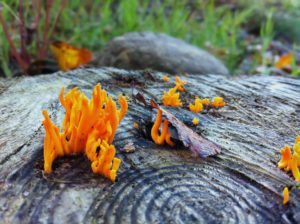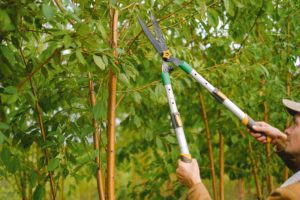As a forestry service provider, we are dedicated to helping landowners and investors make informed decisions about their woodlots and timberland properties. In this blog, we will be discussing the various services we offer, as well as the importance of sustainable forestry practices.
One of these practices is silviculture, which is the science and art of influencing forest stands to meet the objectives of the landowner. In the sections to come, we will delve into the details of silviculture and why it is essential for the long-term health and productivity of your woodlot. We hope you find these articles informative and helpful in your journey as a landowner or investor.
What is Silviculture?
Silvicultural technique is based heavily on science but is more accurately the applied art of influencing forest stands to meet specific goals and objectives. At Tall Pines Forest Management, we specialize in silviculture techniques that help our clients maximize the productivity, health, and diversity of their timberland.

Silviculture combines science and technique to achieve results.
One of the main goals of silviculture is to maintain or improve the overall condition of a forest. This can involve thinning overcrowded stands to allow for more growth, removing damaged or diseased trees, and planting new trees to replace those that have been harvested or lost. By managing the forest in this way, we can help ensure that it remains healthy and productive for generations to come.
Silviculture can also be used to achieve specific management objectives, such as maximizing timber production, enhancing wildlife habitat, or improving the health or appearance of the forest. Our team of experienced foresters will work with you to identify your goals and objectives and develop a customized silviculture plan to help you achieve them.
In addition to helping you manage your forest, Tall Pines Forest Management can also provide you with expert guidance on how to sustainably harvest your timber. We can help you determine the most appropriate timing and methods for harvest, as well as advise you on how to minimize any negative impacts on the forest ecosystem.
Overall, hiring a professional forester like those at Tall Pines Forest Management can help you get the most value out of your timberland while also ensuring that it is managed in an environmentally responsible way. Whether you are looking to maximize timber production, enhance wildlife habitat, or simply enjoy the beauty of your forest, we can help you achieve your goals through expert silviculture and forest management services.
Why Does SIlviculture Matter For Woodlots?
First and foremost, silviculture helps to ensure the long-term health and productivity of your forest. By actively managing the growth and development of your trees, you can maximize their potential for timber production and other forest products. Silviculture also helps to maintain the diversity and structure of your woodlot, which can support a wide range of wildlife and other ecological benefits.
In addition to the practical benefits of silviculture, it is also an important tool for adapting your forest to the challenges of a changing climate. By planting and managing trees that are well-suited to local growing conditions, you can help to ensure the long-term resilience of your woodlot.
Finally, silviculture can also play a role in meeting your personal goals and objectives for your woodlot. Whether you want to maximize timber production, create a peaceful retreat for recreational activities, or simply preserve the natural beauty of your land, silviculture can help you achieve your vision.
Examples of a Silvicultural Technique
To illustrate how silviculture can affect your own woodlot, consider these examples of silvicultural techniques used on a regular basis by professionals.
Brashing or Pruning

Brashing, or pruning, trees is a very common silvicultural technique.
For our first example, let’s examine “Brashing or pruning as it is more commonly referred to here in the northeast.” Brashing is a commonly used Silvicultural technique foresters understand and implement. Brashing is an important silvicultural practice that helps to improve the structure and form of a conifer plantation. It is typically carried out on young trees that are at least 4-5 years old and are approaching the point where they will be thinned for the first time. By removing the lower branches, foresters can improve the overall quality and value of the trees by increasing the volume of clear wood that can be harvested.
In addition to improving timber quality, brashing can also have a number of other benefits. It can reduce the risk of fire by removing the lower branches that are most prone to ignition, and it can also reduce the risk of damage from insects and diseases that can be transmitted through the lower branches. Brashing can also make the trees more resistant to wind damage by reducing the wind resistance of the canopy.
Overall, brashing is an important tool in managing a conifer plantation. By carefully selecting which trees to brash and by controlling the height of the brashing, foresters can help to improve the long-term health and productivity of the plantation while also maximizing the value of the timber that is produced.
Thinning
Our second example is “thinning.” Thinning is the selective removal of trees from a stand to improve the growth and quality of the re
maining trees. There are two types of thinning: selection thinning and reduction thinning.
Selection Thinning
Selection thinning is the removal of specific trees from a stand to allow the remaining trees to grow to their full potential. This type of thinning is typically used in younger stands when the trees are smaller and more uniform in size. The goal of selection thinning is to create a more even stand with a well-spaced canopy.
The trees to be removed are selected based on their size, species, location, and potential for growth. The remaining trees are spaced evenly throughout the stand to allow for maximum light penetration and airflow. This helps to reduce competition for resources and promotes the development of strong, healthy trees.
Reduction Thinning
Reduction thinning is the removal of a specific number of trees from a stand to reduce competition and improve the growth of the remaining trees. This type of thinning is typically used in older stands where the trees are larger and more diverse in size. The goal of reduction thinning is to maintain the overall density of the stand while improving the quality and value of the remaining trees.
The trees to be removed are selected based on their size, species, location, and potential for growth. The number of trees removed is calculated based on the desired final density of the stand. The remaining trees are spaced evenly throughout the stand to allow for maximum light penetration and airflow. This helps to reduce competition for resources and promotes the development of strong, healthy trees.
Thinning is an important silvicultural practice that helps to maintain the health and productivity of a forest. By removing excess trees, thinning allows the remaining trees to grow to their full potential and produce high-quality timber. Thinning is typically carried out every 5-15 years, depending on the age and species of the trees in the stand.
Why Hire a Forester to Perform Silviculture?
Silviculture is the art and science of growing and tending forest stands. It involves managing the growth, health, and composition of forests to meet various objectives, such as timber production, wildlife habitat, carbon sequestration, and recreation.
So, why hire a forester to perform silviculture?
First and foremost, a forester has the training and expertise to help you achieve your desired outcomes. Foresters are trained in the principles and practices of silviculture, as well as the biology and ecology of trees and forests. They can help you develop a customized management plan that considers your goals, the characteristics of your land, and the local environment.
A forester can also help you navigate the complex regulations and policies that may affect your land. In many areas, there are rules and guidelines for activities such as timber harvesting, prescribed burning, and wildlife management. A forester can help you understand these requirements and ensure that you are in compliance.
Additionally, a forester can help you maximize the economic value of your land. They can help you identify the most valuable species of trees to plant, determine the best timing for harvesting, and negotiate with buyers. This can help you get the best return on your investment in silviculture.
Finally, a forester can help you be a good steward of your land. They can help you adopt practices that protect soil, water, and wildlife resources, as well as address issues such as invasive species and climate change. By working with a forester, you can ensure that your land is managed in a sustainable and responsible manner.
At Tall Pines Forest Management, we are proud to offer silviculture services to help our clients grow and tend their forests. Our team of certified foresters has the knowledge and experience to help you achieve your goals, whether you are looking to produce timber, enhance wildlife habitat, or simply enjoy the beauty of your land. Contact us today to learn more about how we can help you with your silviculture needs.
There are also many more general reasons to hire a forester when it comes to managing your timberland property. Here are a few:
- Expertise: Foresters are trained professionals with a deep understanding of all aspects of forestry, including tree growth and development, timber management, and environmental conservation. They can provide valuable guidance on how to manage your land in a way that is both sustainable and financially viable.
- Cost-efficiency: Foresters can help you develop a management plan that is tailored to your specific goals and objectives, taking into account the unique features of your property and the local market conditions. This can help you avoid costly mistakes and ensure that you are maximizing the value of your land.
- Compliance: There are often a number of regulations and laws that govern how you can manage your timberland, and a forester can help you navigate these requirements. This can help you avoid fines or legal issues that could arise from non-compliance.
- Sustainability: Foresters are committed to responsible forestry practices that preserve the health and vitality of the land for future generations. By hiring a forester, you can be confident that you are taking an environmentally responsible approach to managing your timberland.
Overall, hiring a forester is an investment in the future of your property. By working with a professional who has the expertise and experience to help you manage your land in a sustainable and cost-effective manner, you can ensure that your timberland is a valuable asset for years to come.
Working With Tall Pines Forest Management
As a forestry service provider, Tall Pines Forest Management is committed to helping landowners understand the importance of silviculture and how it can benefit their woodlot. We believe that proper silviculture practices are essential for maintaining the health, productivity, and value of your forest. Whether you are looking to maximize timber production, improve wildlife habitat, or simply enjoy your woodlot, our team of experienced foresters can help you develop and implement a silviculture plan that meets your goals. If you have any questions about silviculture or would like to learn more about our services, we encourage you to get in touch.


0 Comments